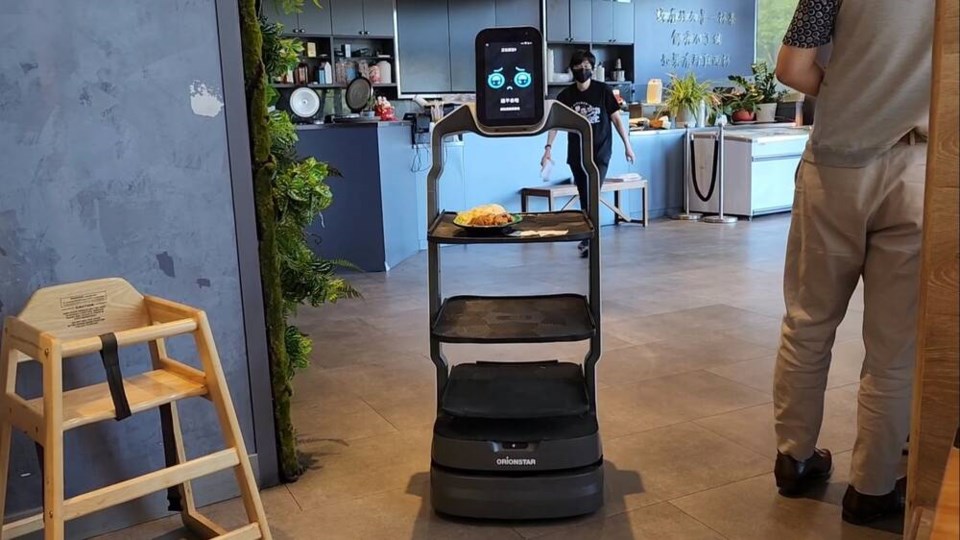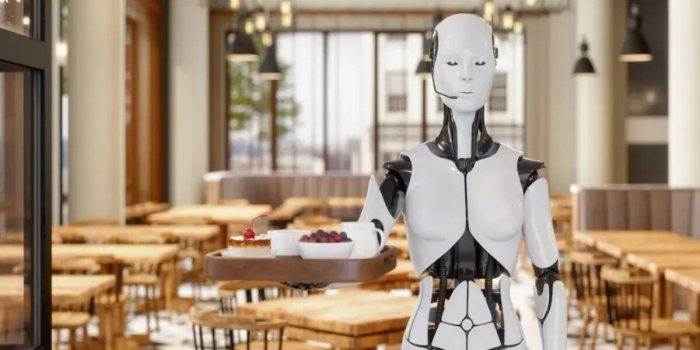When discussing the realm of robots, a common concern revolves around the potential replacement of human workers. A recently published report by Richmond News on a Saturday sheds light on the current situation within the service industry, suggesting that such fears have not yet manifested.
The article delves into the growing trend of utilizing robot waiters within numerous city restaurants to address the prevailing scarcity of labor. However, the outcomes of this implementation have not been as anticipated. In fact, two specific restaurants were compelled to terminate their robot servers due to their ineffectiveness.

Upon closer examination, it becomes evident that while these robot servers have exhibited utility in certain scenarios, they have also posed challenges in many others. The consensus among the restaurants interviewed by Richmond News is that while the robots can be advantageous in some situations, they fall short in adequately replicating the tasks performed by human workers.
“[Robot servers] were a new thing here so we decided to try it out,” said Alan Song from Foodie Kitchen.
“It’s great for carrying hot dishes and bringing used dishes and bowls back to the kitchen, to help save human labour.”
In an interesting turn, Song, a figure in the article, pointed out that human waitstaff were required to closely monitor the robot servers during the food delivery process, adding an extra layer of responsibility to their roles. This unforeseen consequence not only counteracts the goal of easing labor shortages but also contributes to an increase in the workload of human employees.
“We don’t use it to deliver soup because soup may spill when the robot stops. And if we adjust the location of the tables or combine two tables into one for a larger group, the robot gets confused.”
Furthermore, incidents involving accidents attributed to the robot servers have come to the forefront. A specific incident recounted involved a waiter falling onto a robot, resulting in an injury to her toe. Another instance highlighted the robot’s failure to maintain stability while carrying dishes, causing them to crash to the ground due to excessive speed.
“Restaurants should think carefully before getting a robot server,” he said. “I would say it is helpful for delivering dishes in a bigger restaurant and can help carry food that’s either too hot or cold, but for smaller restaurants, it might not be necessary.”

Richmond News also detailed cases where restaurants introduced robots into their service teams in 2021, only to phase them out in 2022 as the effects of the COVID pandemic subsided and customer traffic surged. “They were working very well during the pandemic when we had fewer customers and more spacing between tables,” said owner Zhengwen Hao.
“But when the lockdown was lifted and we had more customers and tables, the robot servers caused more inconvenience than help.”
A manager named Hao emphasized that the robots were unable to match the pace required for efficient service, leading to collisions between the robots and both customers and waitstaff, ultimately leading to unfulfilled expectations in terms of food delivery.
“For restaurants like ours where the seats change a lot depending on the size of the party, it is not convenient to use robot servers who are just not as flexible as staff.”
In conclusion, while the prospect of robot servers appears promising, the reality portrayed by the report underscores their current limitations. Their inability to seamlessly replace human workers and the added complexities they introduce to existing workflows indicate that, despite technological advancements, a full transition away from human service personnel is not yet feasible.


